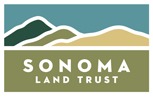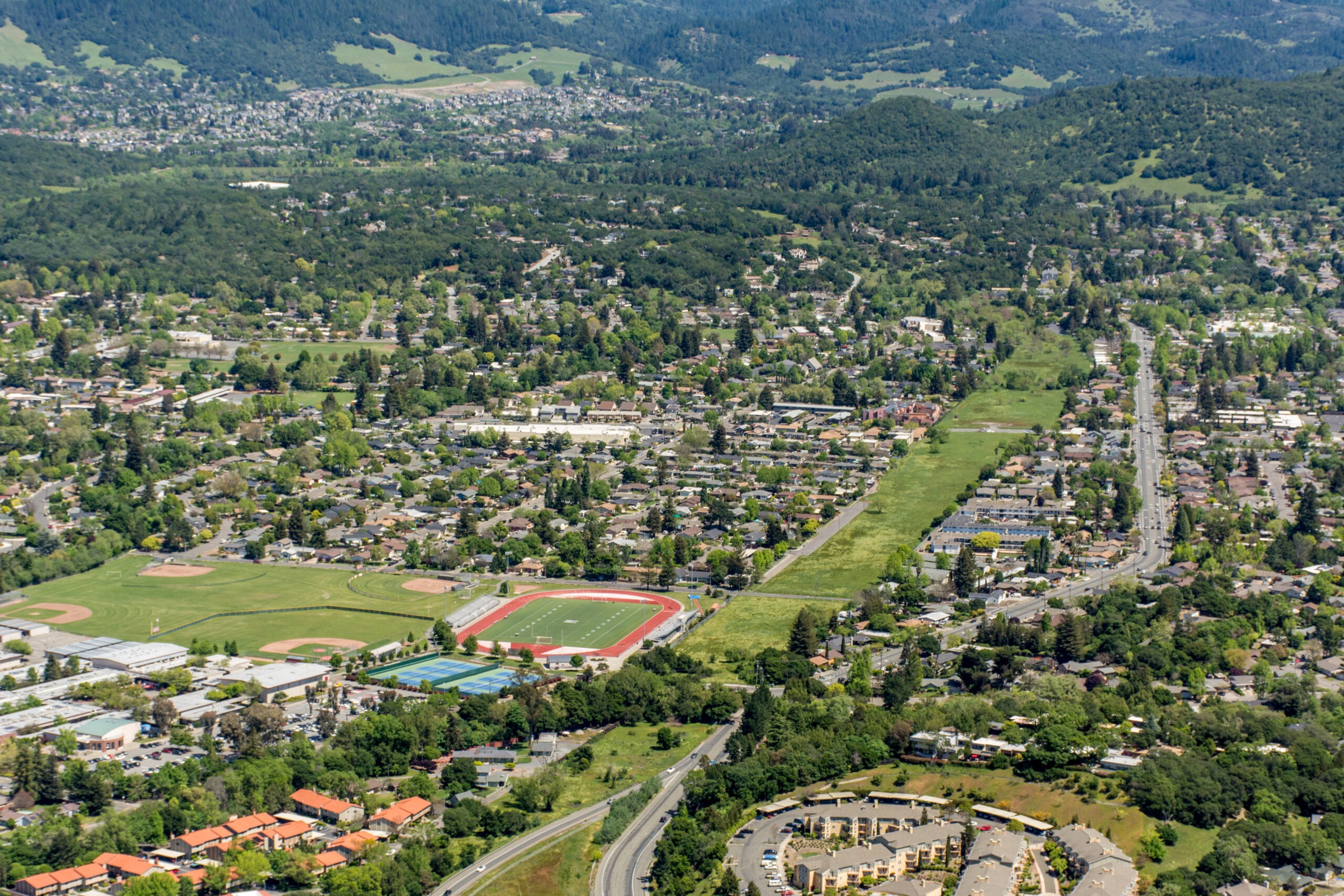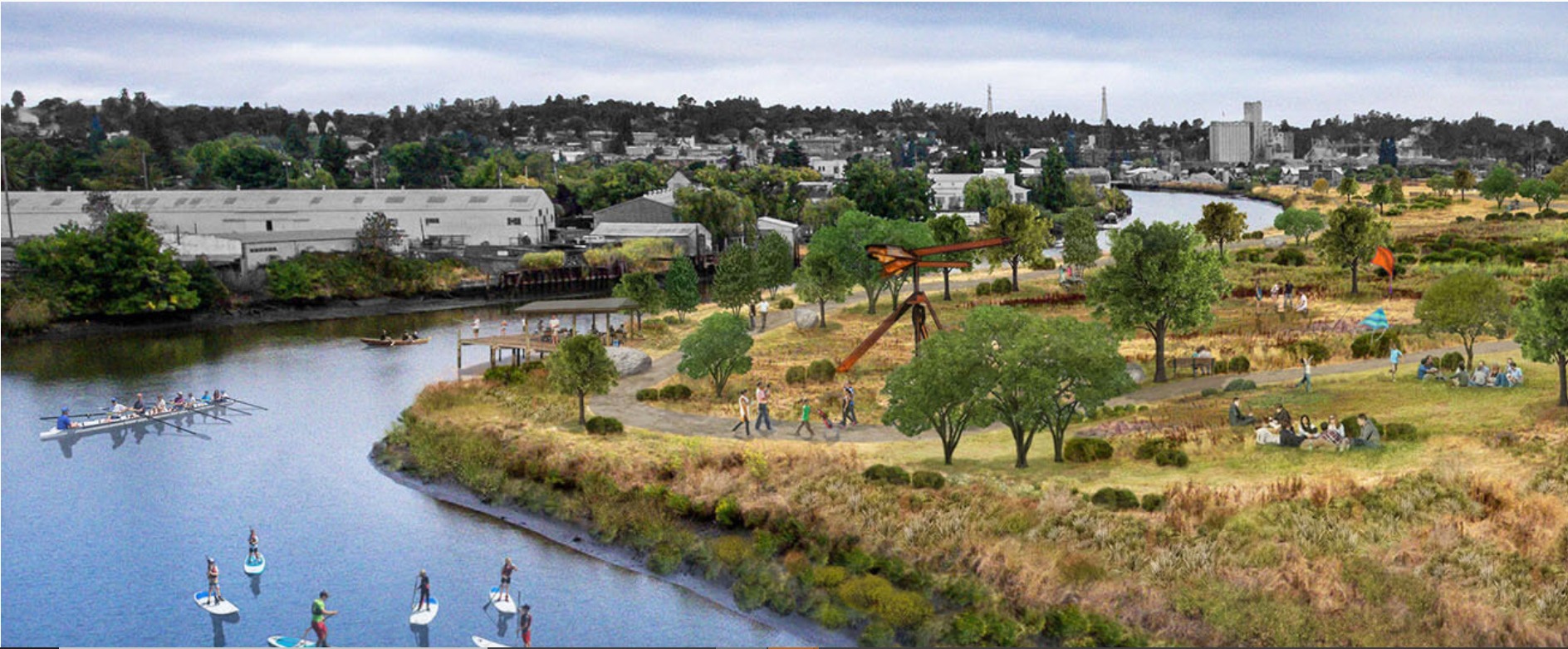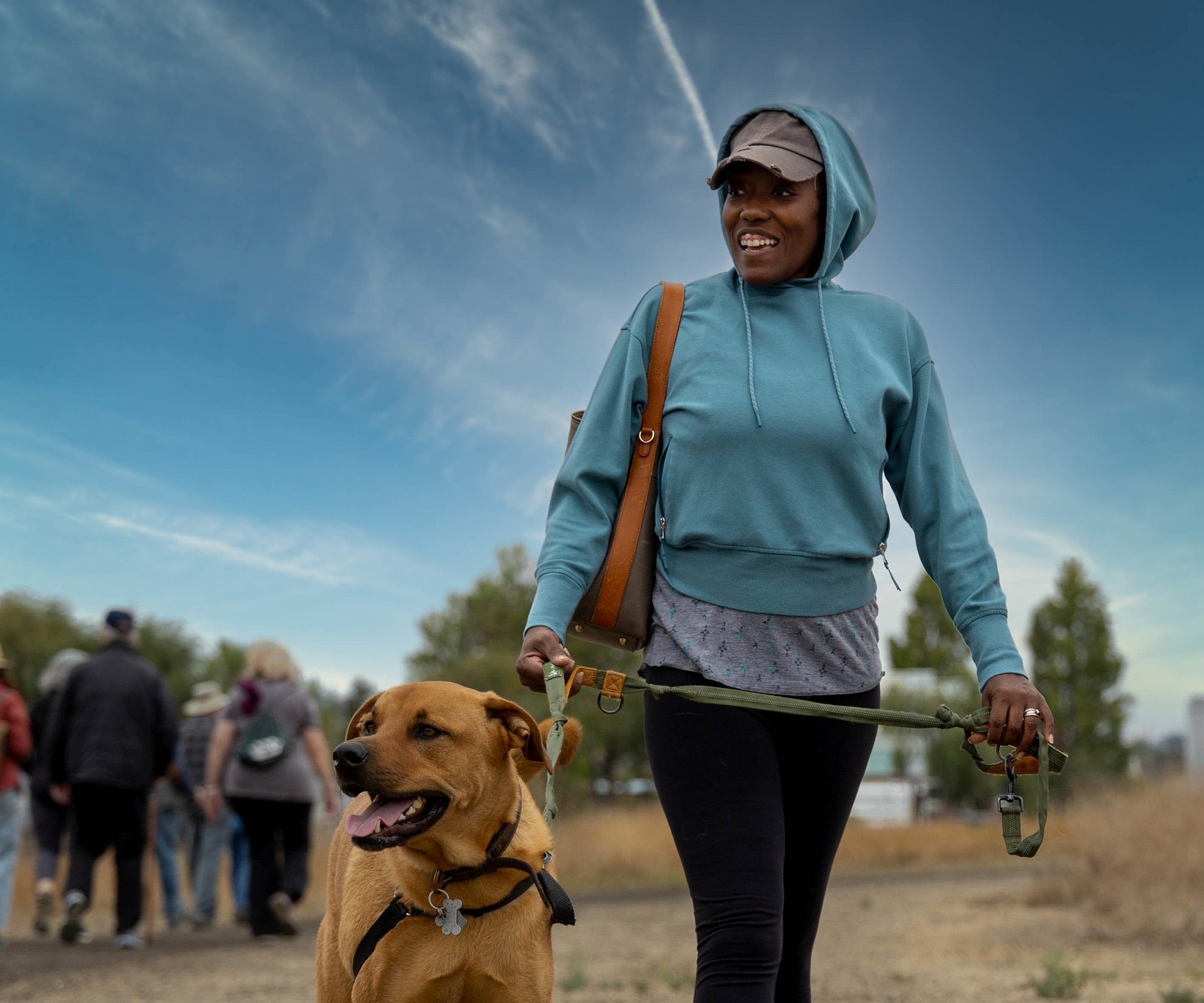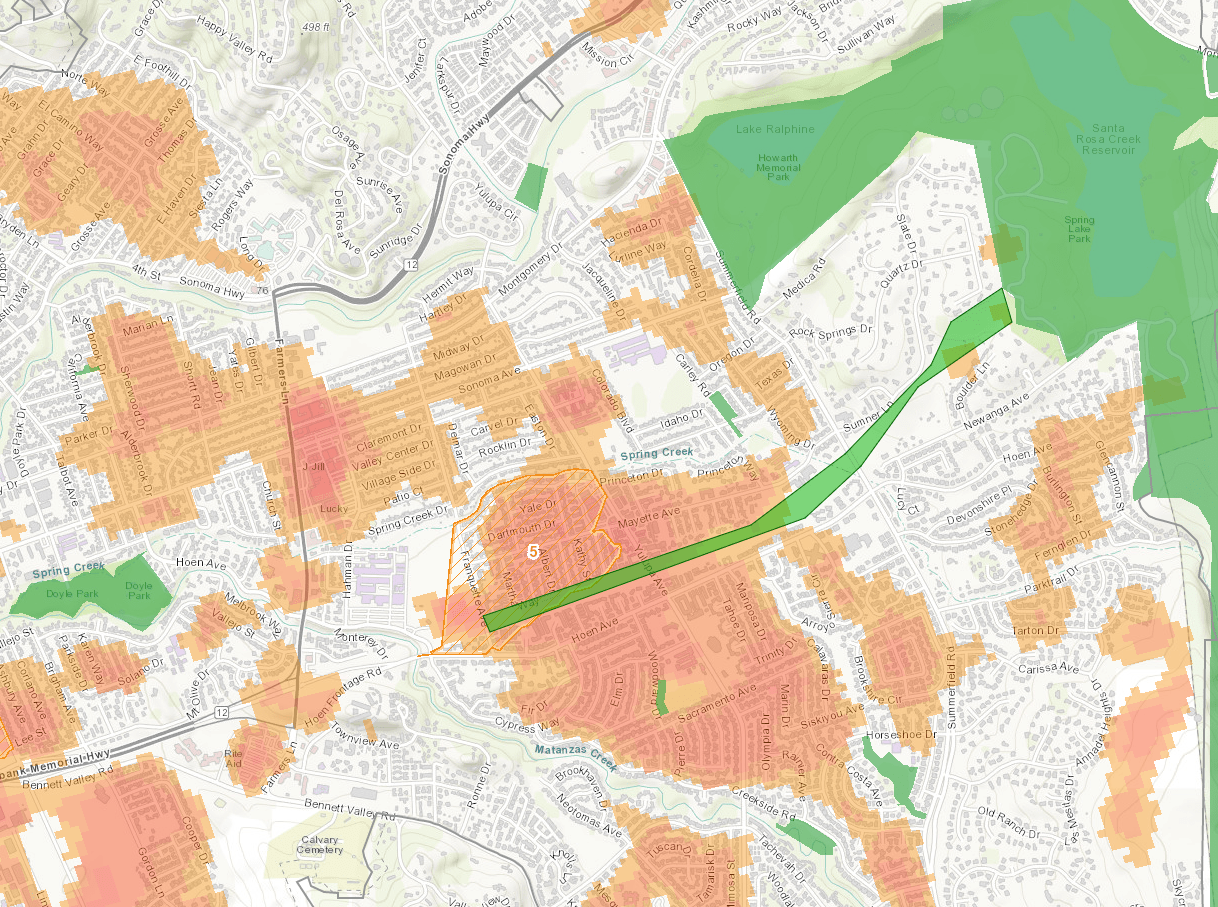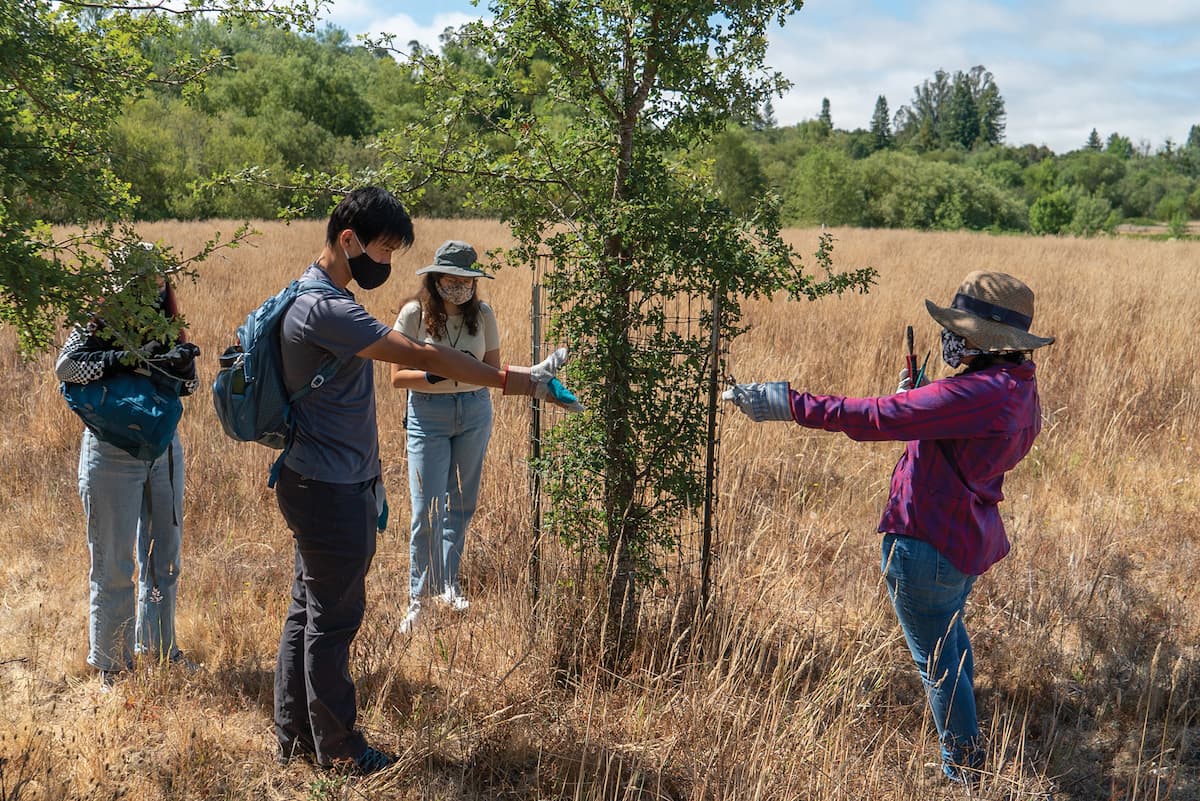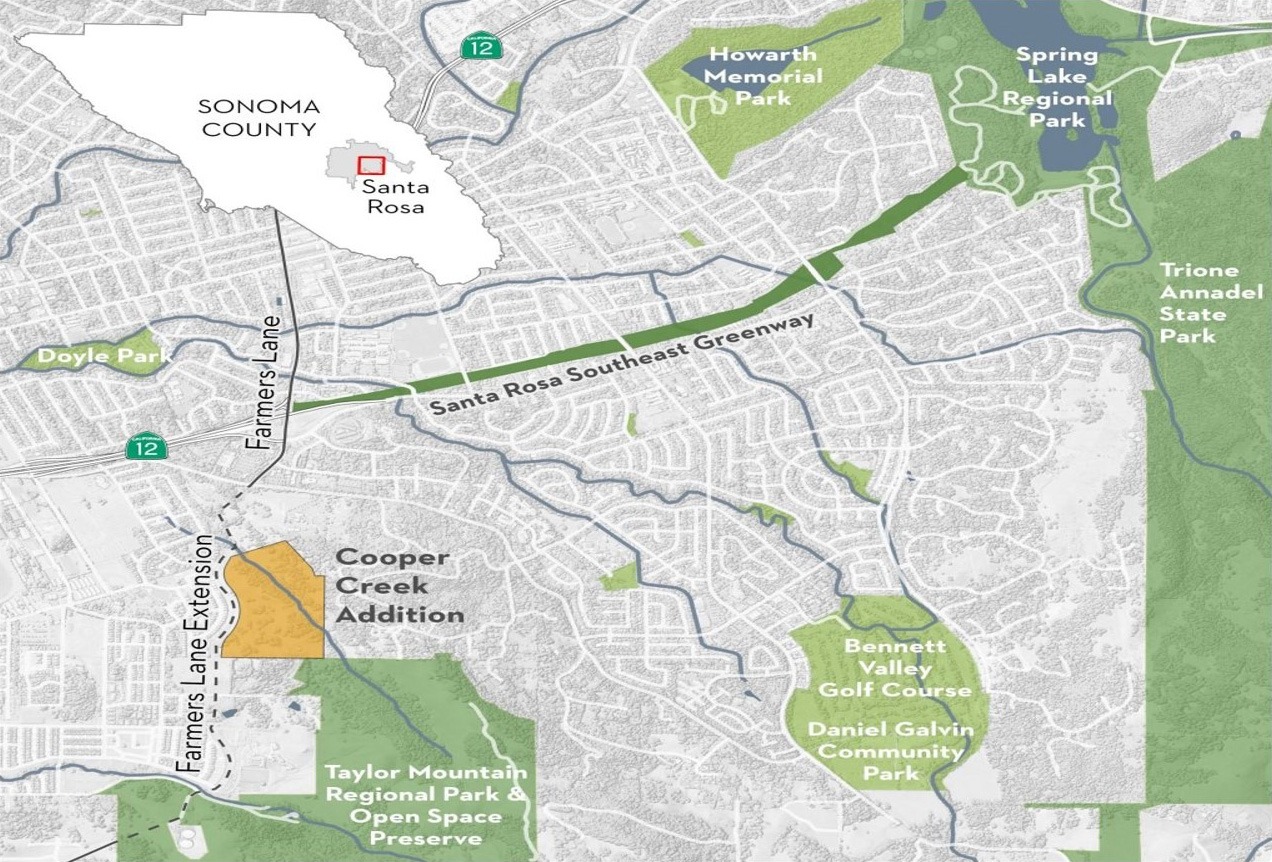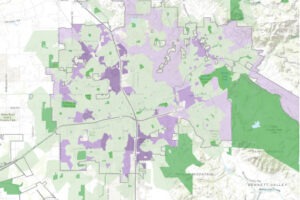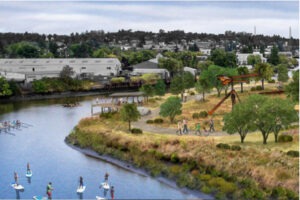Strategic Plan 2023–2028
People
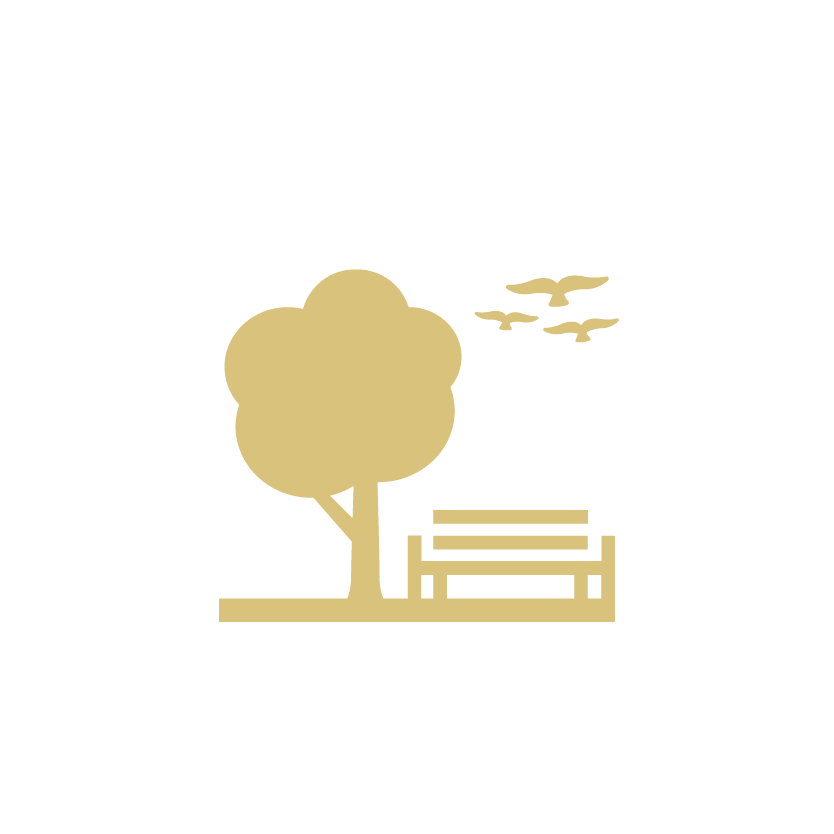

The challenge
One in four people living in Sonoma County do not have a park located within the recommended half-mile walking distance of their home. This inequity is disproportionately distributed among communities of color, urban residents, and lower-income communities. Without access to parks, people have fewer recreational opportunities, increased physical health risks from poor air quality, and hotter temperatures due to a lack of grass, trees, and water to offset the heat retained in buildings and roads in the urban core.

The solution
Green spaces make more urbanized areas healthier by lowering temperatures, improving air quality, reducing greenhouse gas emissions, absorbing and storing stormwater, and providing opportunities for recreation. Through the acquisition and transfer of land to park agencies and nonprofits, we are providing new public spaces that improve the overall health of the community while also making them more climate resilient. Our work recognizes the right of everyone to have access to nature in urban areas by facilitating inclusive planning with cities, neighborhood groups and residents on general plans and park master plans.

goal
Ensure equitable access to nature through parks and open space for all people in Sonoma County. Increase the number, variety, and proximity of natural places so that all members of our diverse community can benefit from the social, public health, and climate benefits parks and open spaces provide.
Why this matters
Marginalized communities have the least access to natural and open spaces, including public parks, and are most impacted by the negative effects of climate change. This disparity must be addressed in how and where we prioritize our investments and actions by promoting a nature nearby program to increase availability to parks in our community. By addressing access to parks, we are also providing a solution to the leading cause of weather-related fatalities in the US, — excessive heat events which disproportionately affect communities of color.

Our approach
Sonoma Land Trust will prioritize the purchase and preservation of land that creates, connects, and expands parks across neighborhoods most in need of publicly accessible open spaces. We will partner with local tribes to increase access and ownership of culturally significant lands, and work with historically marginalized communities to identify and pursue opportunities to remove barriers for Black and Indigenous People of Color (BIPOC) residents. In addition, we will work to facilitate, inform, and support the planning and design of parks that reflect the desires and needs of the community while addressing the impacts of a changing climate.
